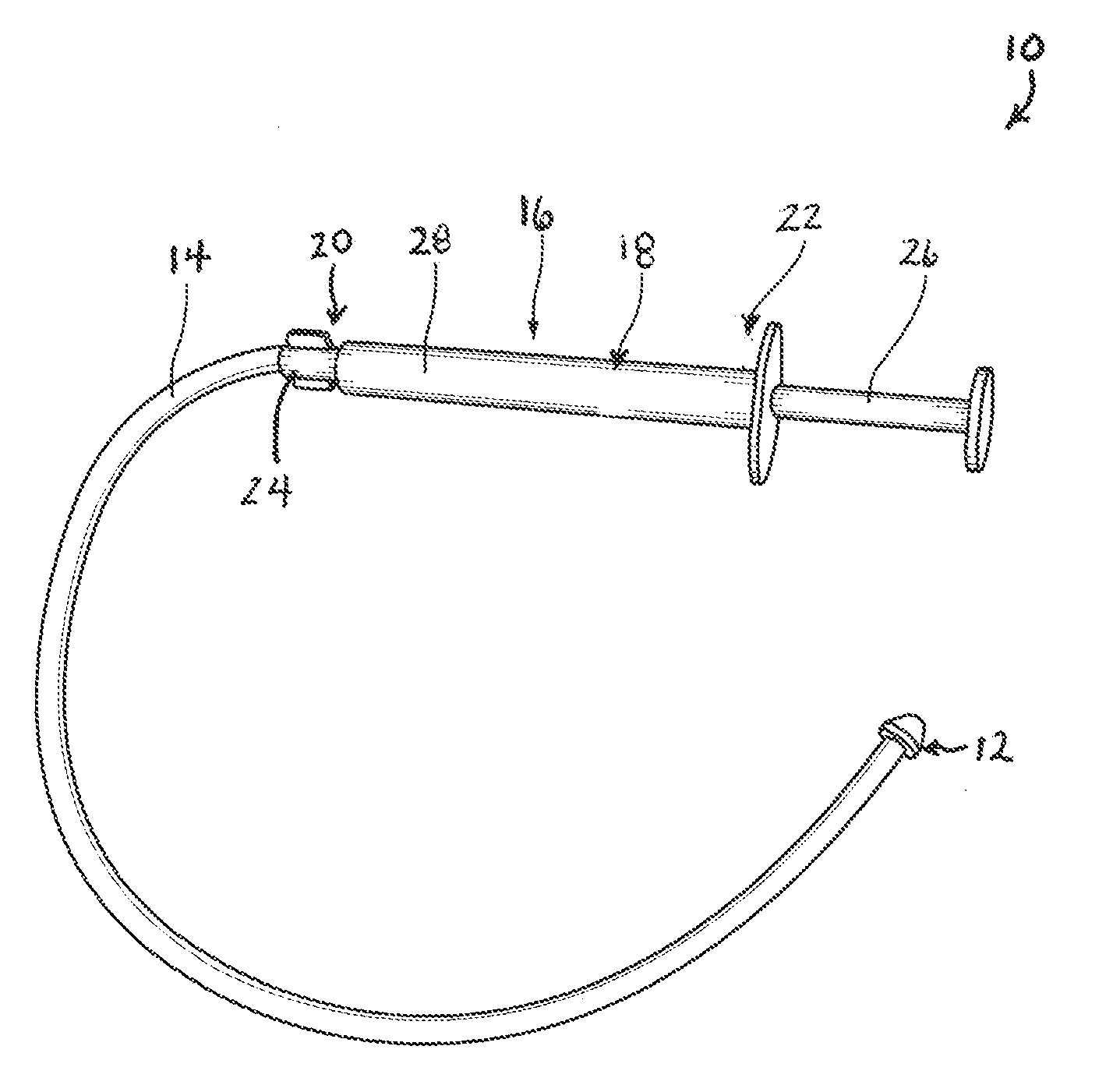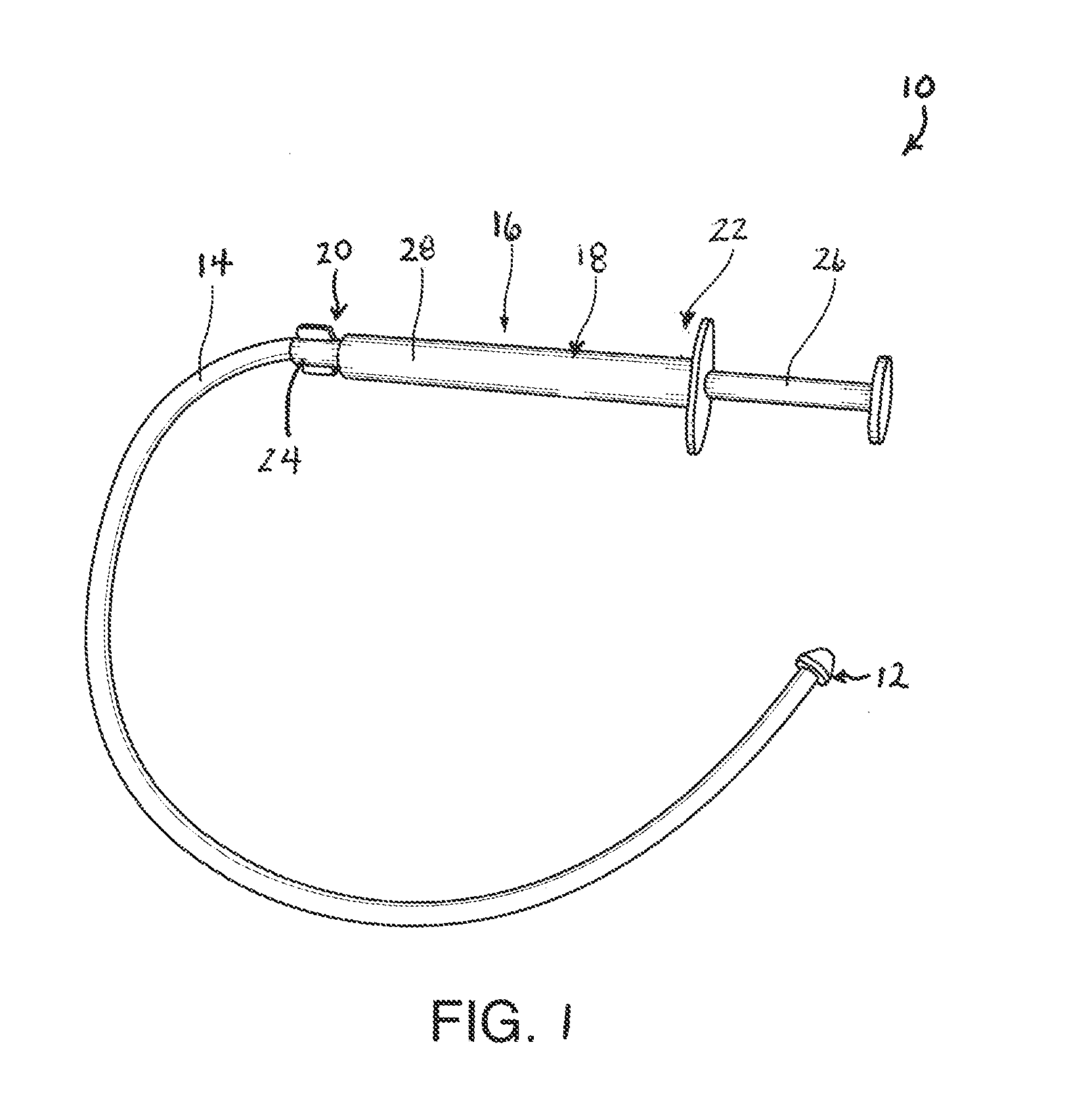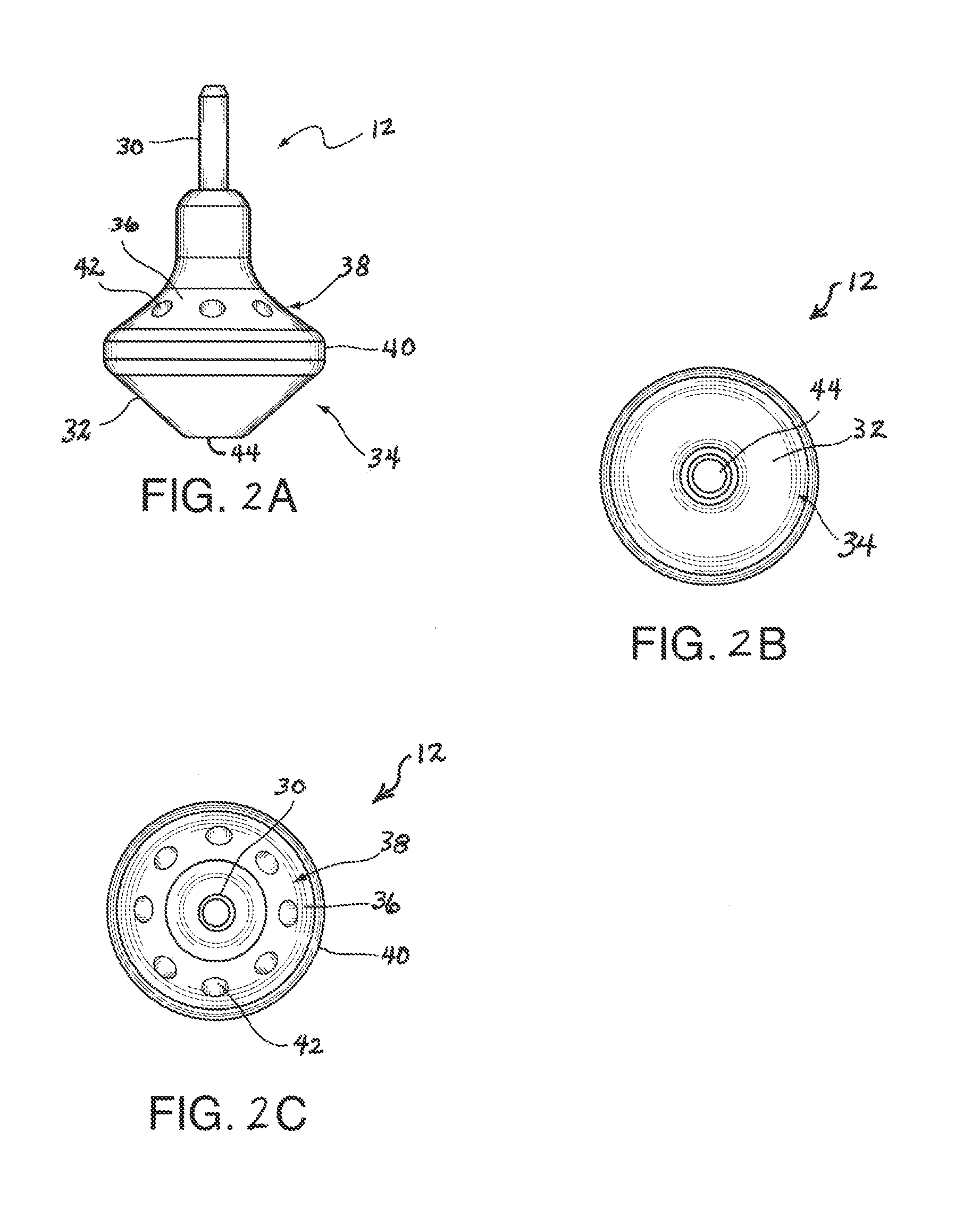Device and method of using the same for removing a flowable material contained within a vessel or cavity
a flowable material and device technology, applied in the direction of machines/engines, respirators, water supply installations, etc., can solve the problems of limiting the extent and the area that can be effectively treated and the amount of material, affecting the removal effect of flowable material, etc., to achieve the effect of enhancing the removal of flowable material, minimizing damage or disruption of the vessel or cavity, and minimizing damage or disruption to immediate areas
- Summary
- Abstract
- Description
- Claims
- Application Information
AI Technical Summary
Benefits of technology
Problems solved by technology
Method used
Image
Examples
second embodiment
[0120]In reference to FIGS. 4A-4C, there is shown a nozzle body identified generally by reference numeral 70 for the present invention. The nozzle body 70 is structurally and functionally similar to the embodiment of FIGS. 2A-2E. In the present embodiment, the nozzle body 70 includes a flattened or truncated first side portion 72 disposed opposite from an outlet 74, and a second side portion 76 with a straight profile to form a low conical shape. Four apertures or inlets 78 are disposed radially spaced-apart from one another in the second side portion 76. The truncated first side portion 72 allows the nozzle body 70 to be placed close to the inner surface of the cavity 60 thereby facilitating removal of a greater amount of the flowable material 66.
third embodiment
[0121]In reference to FIGS. 5A-5C, there is shown a nozzle body identified generally by reference numeral 80 for the present invention. The nozzle body 80 is structurally and functionally similar to the embodiment of FIGS. 4A-4C. In the present embodiment, the nozzle body 80 includes a flattened or truncated first side portion 82 disposed opposite from an outlet 84, and a second side portion 86 with a straight profile to form a high conical shape. Four apertures or inlets 88 are disposed radially spaced-apart from one another in the second side portion 86. The truncated first side portion 82 allows the nozzle body 80 to be placed close to the inner surface of the cavity 60 thereby facilitating removal of a greater amount of the flowable material 66. The high conical shape of the second side portion 86 allows the size of the inlets 88 to be increased, which better accommodates the passing of thicker or more viscous flowable material 66 therethrough.
fourth embodiment
[0122]In reference to FIGS. 6A-6C, there is shown a nozzle body identified generally by reference numeral 90 for the present invention. The nozzle body 90 is structurally and functionally similar to the embodiment of FIGS. 4A-4C. In the present embodiment, the nozzle body 90 includes a second side portion 92 with a convex profile to form a low hemispherical shape. Four apertures or inlets 94 are disposed radially spaced-apart from one another in the second side portion 92.
PUM
 Login to View More
Login to View More Abstract
Description
Claims
Application Information
 Login to View More
Login to View More - R&D
- Intellectual Property
- Life Sciences
- Materials
- Tech Scout
- Unparalleled Data Quality
- Higher Quality Content
- 60% Fewer Hallucinations
Browse by: Latest US Patents, China's latest patents, Technical Efficacy Thesaurus, Application Domain, Technology Topic, Popular Technical Reports.
© 2025 PatSnap. All rights reserved.Legal|Privacy policy|Modern Slavery Act Transparency Statement|Sitemap|About US| Contact US: help@patsnap.com



